Legio VI Ferrata
Legio VI Ferrata: one of the Roman legions. Its name means "ironclad", which is probably a reference to the suits of armor.
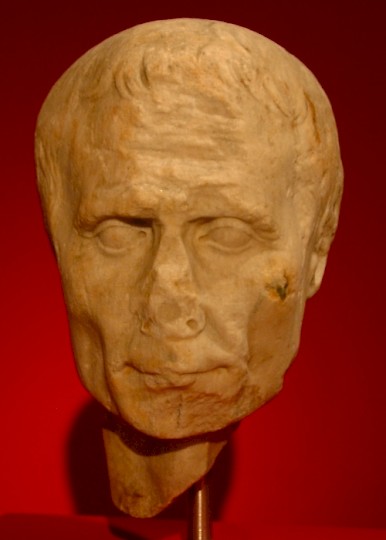
This legion was recruited in 52 BCE by Julius Caesar in Gallia Cisalpina, and saw its first action during the campaign against the Gallic leader Vercingetorix, who was besieged at Alesia. Later, it was stationed during the winter at Châlons-sur-Saône or Mâcon. In 51, the ironclads fought against the Carnutes of the lower Loire, and were sent to Orléans.
During the civil war between Caesar and his fellow-triumvir and Pompey the Great, the Sixth was the most mobile of all units. It fought in Hispania in the battle of Ilerda (summer 49), returned to the east, and served at Dyrrhachium in the first months of 48. It was present in the battle of Pharsalus (9 August 48), accompanied Caesar to Alexandria (48/47), and decided the battle of Zela (2 August 47) in Pontus. After these campaigns, in which the Sixth suffered heavily, the dictator sent it sent back to Italy, from where veterans were settled at Arles, which was called Colonia Iulia Paterna Arelatensium Sextanorum, "the ancestral Julian colony of Arles of the soldiers of the Sixth". However, the legion was present at Munda (17 March 45).
After Caesar's violent death, the legion was reconstituted by Marcus Aemilius Lepidus, who handed it over to Mark Antony (43). After it had fought against Brutus and Cassius in the battle of Philippi (42), a new colony was formed for veterans who wanted to retire, at Benevento in Italy. Other soldiers were taken to the east by Mark Antony, where they were stationed in Judaea, after they had helped king Herod the Great gain his throne (37).
During the next year, the sixth legion participated in Antony's campaign against the Parthian empire, which was not successful. The Romans were lucky that they reached the country of their ally Armenia.
When Mark Antony got involved in the civil war against Caesar's heir Octavian, VI Ferrata was directed to Greece, but eventually, the war was decided at sea in the naval battle off Actium. From now on, Octavian was sole ruler, and was called the emperor Augustus. The Sixth was sent back to the east, to Syria, where it was to remain forever. Other legions in the region were III Gallica, X Fretensis, and XII Fulminata. In 20, Augustus' stepson (and later successor) employed these units to impress the Parthians; they returned the eagle standards they had obtained at Carrhae in 53 BCE, where the triumvir Crassus had been defeated.
The governor of Syria, Publius Quinctilius Varus, used three of these legions to suppress the rebellions of the Jewish messianic claimants Judas, Simon, and Athronges after the death of king Herod in 4 BCE. It played a role in the struggle between the Roman prince Germanicus and the governor of Syria, Piso.note
It is not clear where the legion was stationed, but it is plausible that it was at Raphanaea near Emesa. Cyrrhus is another possibility. Veterans were later settled at Ptolemais (Acre).
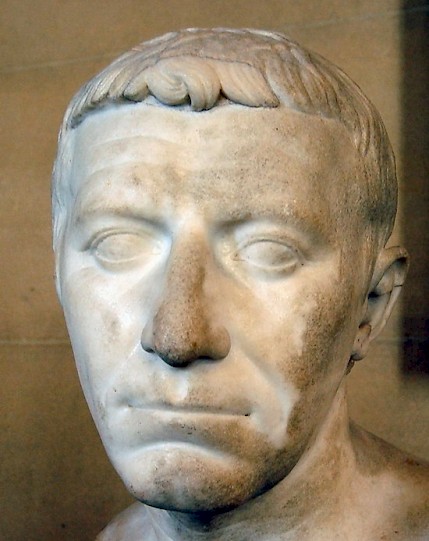
In 58, the Roman commander Gnaeus Domitius Corbulo launched a very successful campaign in the vassal kingdom Armenia, using III Gallica, VI Ferrata and X Fretensis. The capitals Artaxata (south of modern Yerevan) and Tigranocerta were captured (in 58 and 59) and he gave the Armenians a new, pro-Roman king, Tigranes (a great-grandson of king Herod).
However, the Parthians placed another king on the Armenian throne, Tiridates, the brother of their king Vologases I. A retaliatory campaign was organized by Lucius Caesennius Paetus, the governor of Cappadocia, in 62. He used XII Fulminata and IIII Scythica. Unfortunately, the Parthians forced them into surrender at Rhandeia (winter 62/63). Later, Corbulo and his three legions were able to turn the tables, and ordered Tiridates to receive his crown for the second time from the Roman emperor Nero. Although VI Ferrata stayed for some time in Armenia, it returned to Syria.
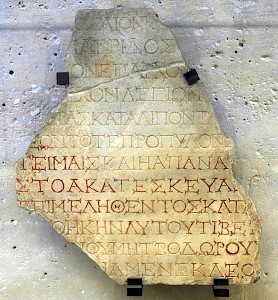
During the civil war of the year 69, the sixth legion sided with Vespasian, but it was not really involved in the war. Only three years before, soldiers of VI Ferrata and IIII Scythica had been defeated, together with the main force of XII Fulminata, in an attempt to suppress the Jewish revolt. Vespasian may have despised the Sixth' fighting qualities. Nevertheless, it was part of the army of Vespasian's ally Mucianus that marched to Italy, and it fought against the Dacians, who had crossed the Danube, which was exposed to the enemies now that all Roman legions were marching on Rome. At least one subunit of the Sixth is known to have reached Italy.
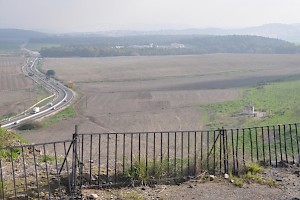
After its return, VI Ferrata was stationed in Commagene, a kingdom on the river Euphrates that had just been annexed. Its base was at Samosata (Samsat). The Sixth participated in the Armenian campaign of the emperor Trajan (114), which culminated in the annexation of this kingdom. However, during the next two years, Trajan tried to seize Mesopotamia and Babylonia, which he was unable to keep. His successor Hadrian gave up all territories east of the Euphrates (117/118).
Before 119, VI Ferrata was moved to Arabia, from where it invaded Judaea during the revolt of Simon ben Kosiba (132-136). After this war, the Sixth stayed in Caparcotna in Galilee, which was soon surnamed Legio (modern Lejjun).
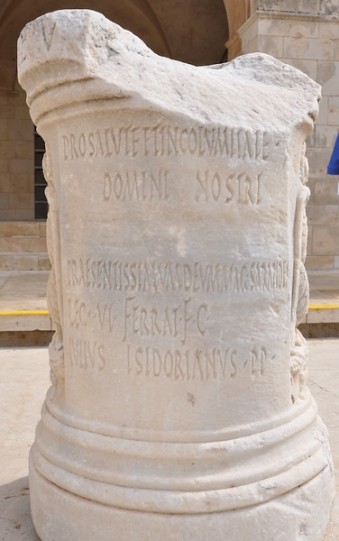
VI Ferrata briefly served in Africa under the emperor Antoninus Pius (r.138-161), where it built a road. Later, when a new war broke out between Rome and Parthia, the emperor Lucius Verus employed the Sixth in Mesopotamia (162-165) and it was probably involved in the capture of Ctesiphon, the capital of the Parthian Empire. During the first stage of this war, the legion's commander was Antistius Adventus, who was later transferred to II Adiutrix.
During the civil war of 193 after the assassination of the emperor Publius Helvius Pertinax, the sixth legion sided with Lucius Septimius Severus and took up arms against Pescennius Niger, who was very close by. This brave act was rewarded with the title Fidelis Constans, "loyal and constant". What happened exactly is not known, but it is likely that behind the conflict between Jews and Samarians in 195 is in fact a civil war. The surname itself suggests that the legion withstood a siege under difficult circumstances, and perhaps its opponent was X Fretensis, but we cannot be certain about this interpretation of the events.
The legion was still in Palestine in 215. It is possible that Severus Alexander (222-235) transferred it from Galilee to Phoenicia, but this is contested. The Sixth ironclad legion was honored by the emperor Philippus Arabs (244-249), who minted coins with the number of this unit. During the reign of Diocletian (284-305), we find the Sixth at Adrou (near Petra in Jordan).
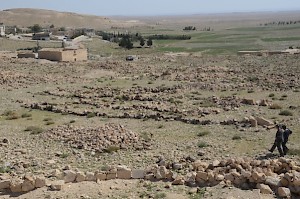
As the Legion is absent from the Notitia Dignitatum, which describes Rome’s officials and military unit in about 400 CE, we may assume that the Sixth Legion Ferrata had by then been destroyed disbanded, or reorganized.
Like almost all Caesarian legions, the emblem of this legion was a bull. It also used the wolf-with-twins.
Literature
- H. Cotton, "The Legio VI Ferrrata", in: Yann Le Bohec, Les légions de Rome sous le Haut-Empire (2000 Lyon) 351-357
- D.K. Kennedy, "Legio VI Ferrata. The Annexation and Early Garrison of Arabia", in: Harvard Studies in Classical Philology 84 (1980), 283-309
- D.K. Kennedy & H. Falahat, "Castris Legionis Sextae Ferratae", in: Journal of Roman Archaeology 21 (2008), 150-169
- I. Piso, "Les légions dans la province de Dacie", in: Yann Le Bohec, Les légions de Rome sous le Haut-Empire (2000 Lyon) 205-225
- Evan Schultheis, "Legio VI Ferrata"
- G.D. Tully, "The στρατάρχης of Legio VI Ferrata and the Employment of Camp Prefects as Vexillation Commanders" in: Zeitschrift für Papyrologie und Epigraphik 120 (1998) 226-232
- N. Tzori, "An Inscription of the Legio VI Ferrata from the Northern Jordan Valley", in: Israel Exploration Journal 21 (1971) 53ff